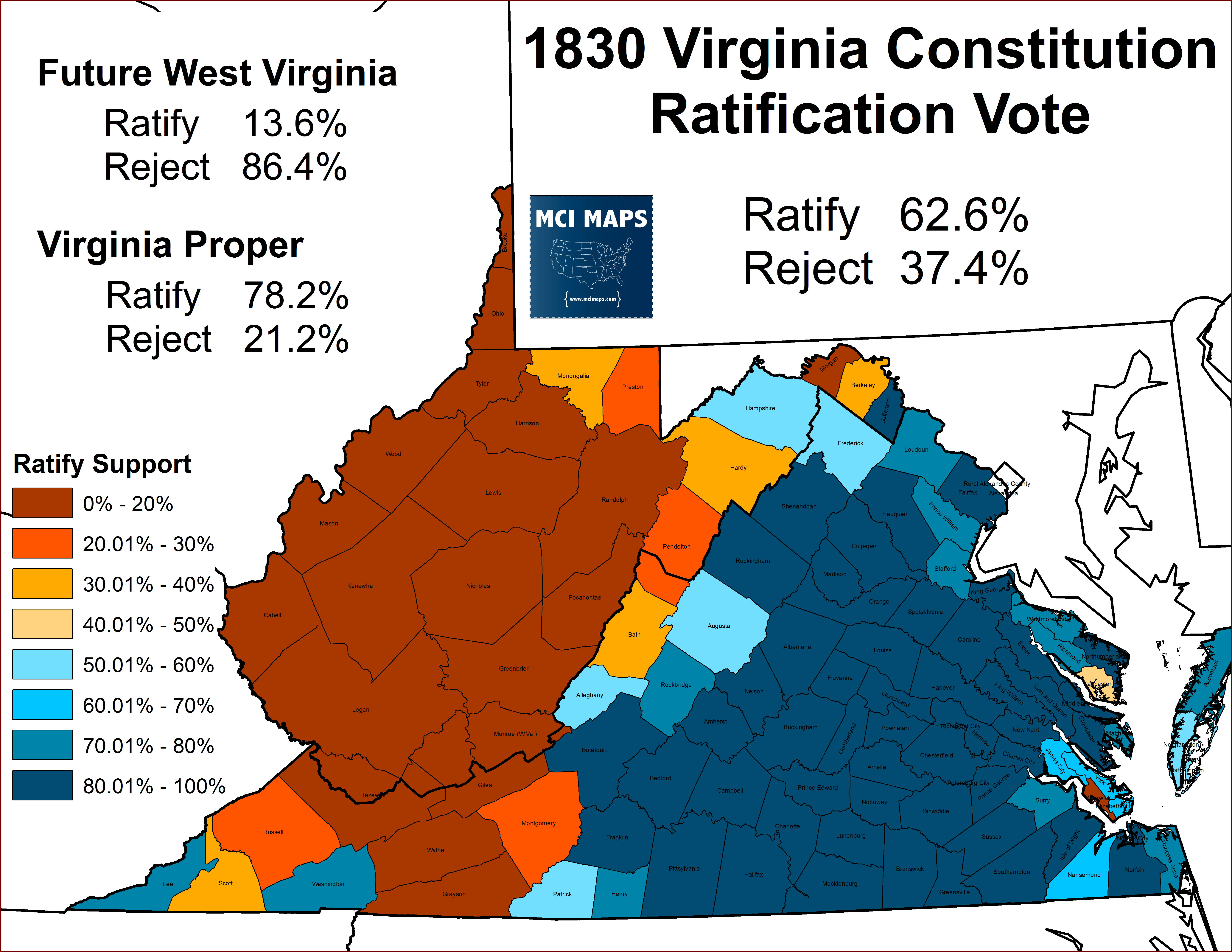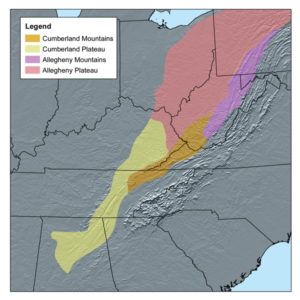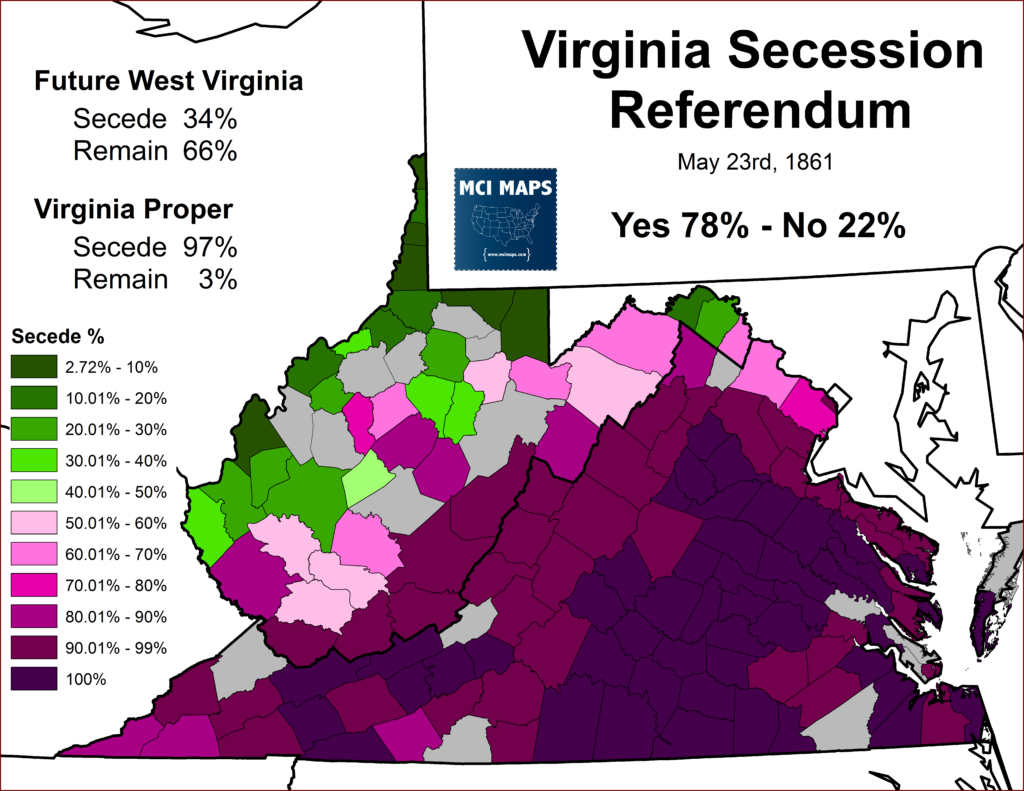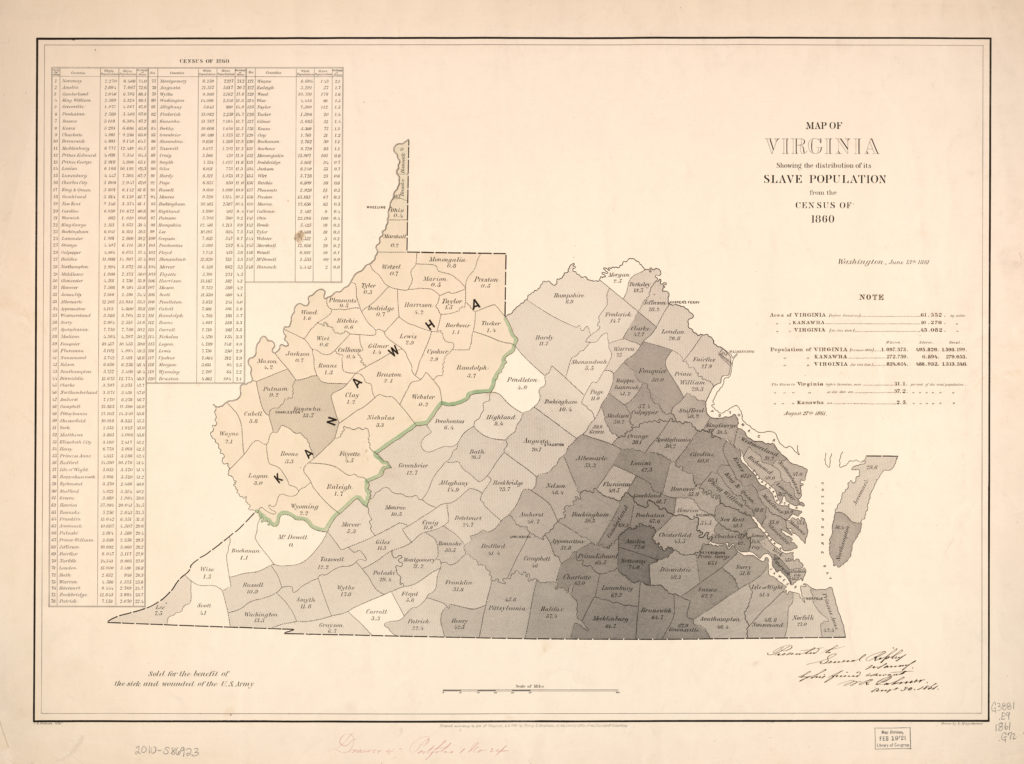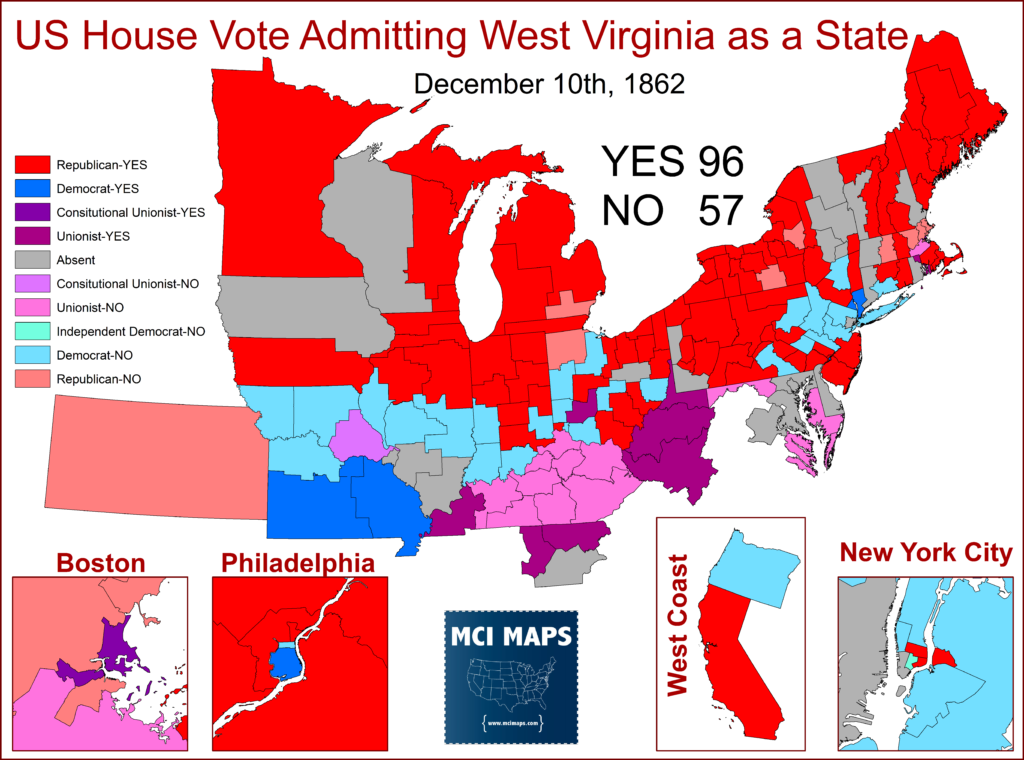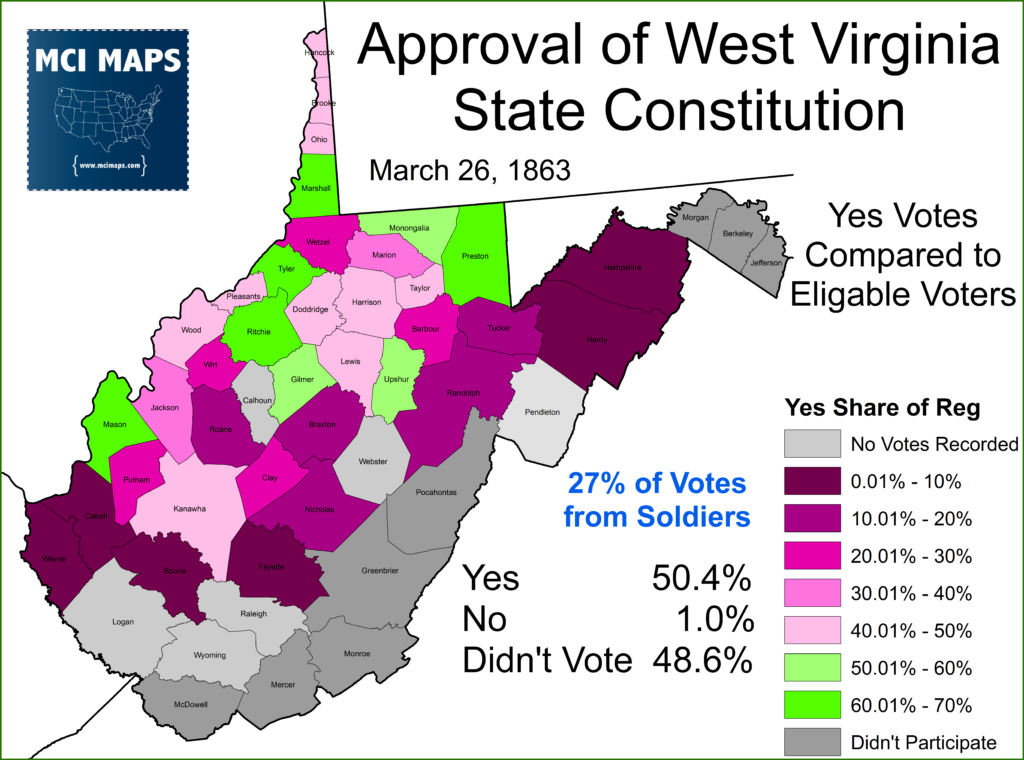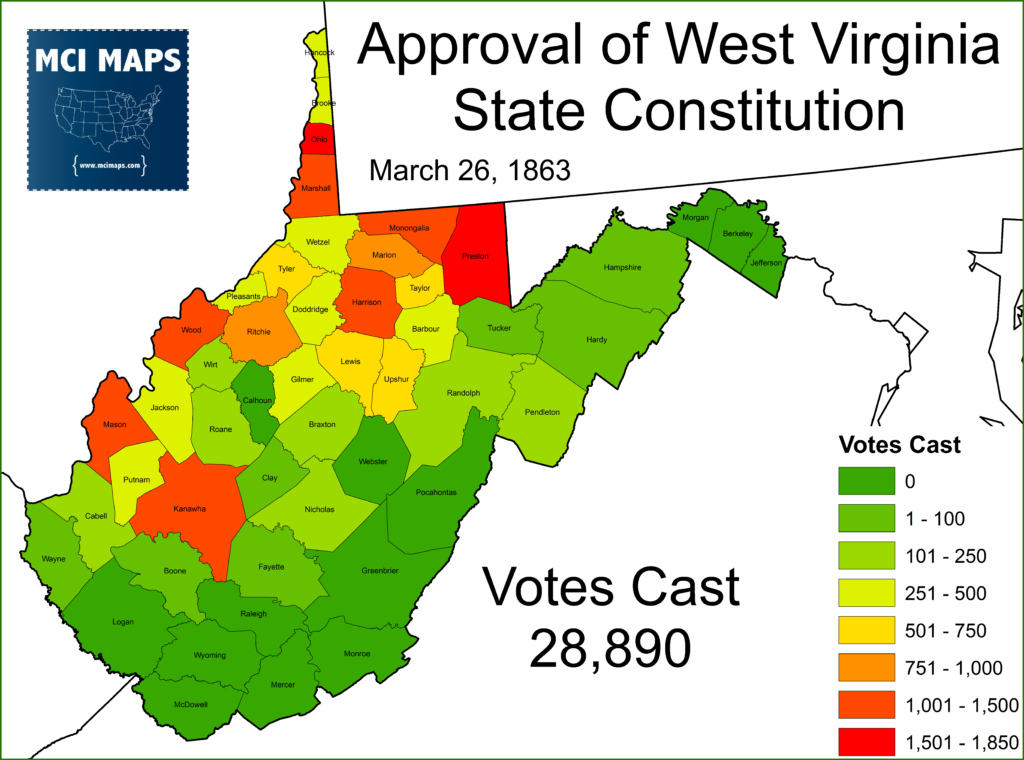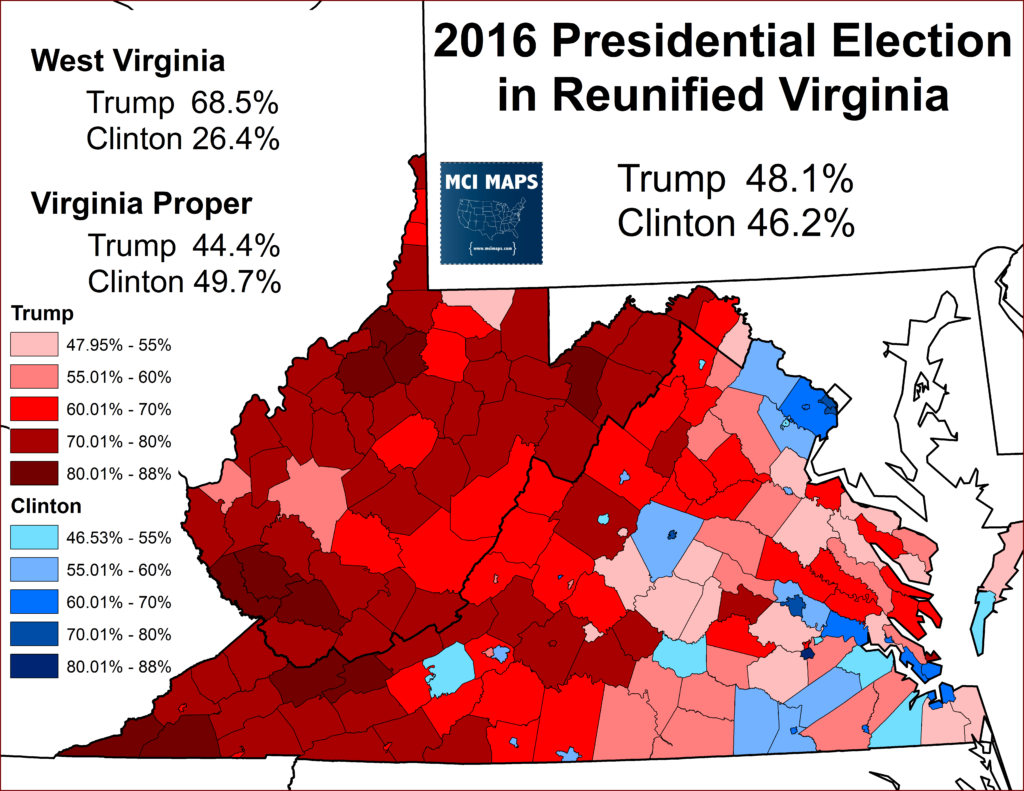In what could be an explosive political development, word is leaking from the legal community that the Supreme Court is going to take up a case that seeks to invalidate the separation of West Virginia and Virginia; forcing the two states to re-unite as one. The two states formed when West Virginia was separated from Virginia during the Civil War. The method of that separation has been long debated in historic circles; with its constitutionality called into question. The case centers around the debate over Article IV, Section 3, Clause 1 of the U.S. Constitution; which reads
States may be admitted by the Congress into this Union; but no new State shall be formed or erected within the Jurisdiction of any other State; nor any State be formed by the Junction of two or more States, or Parts of States, without the Consent of the Legislatures of the States concerned as well as of the Congress.
The debate focuses on whether a new state can be formed from an existing state under any circumstances (even if the existing state approved). It revolves around the effect of the semicolon I highlighted in red, and whether the first half of the section is a separate rule, or tied into the second half of the section. The issue at hand has been debated in the legal community before, but the Court never directly addressed it. It is unclear if the court will also listen to testimony regarding the validity of the vote from West Virginia to leave the state; a vote that was not considered free and fair.
The case, brought forward by voters in several counties from Virginia that border West Virginia, didn’t seem to be gaining any traction, being dismissed by a federal judge; seems poised to be selected by SCOTUS for review.
The issue of West Virginia’s formation has always been a fascinating story from the civil war. It has also been a story of bitterness for some and is a controversial issue when you look at the circumstances involved. Let’s take a look at the history of West Virginia’s separation from its home state.
West Virginia’s Isolation
Tensions existed between East and West Virginia for much of the states history. The state was geographically separated by the mountain range. Western Virginia sat on the Allegheny Plateau. Crossings between the two regions of the state were difficult and the culture and economy of the two regions were different. Map from wikipedia.
The differences were cultural as well. Much of Western Virginia was settled by immigrants; Germans and Scotts-Irish and people from the Pennsylvania and Ohio region. The rougher terrain also made slavery and plantation impractical, and few counties had any slave populations. Petitions to form a separate state/colony date back to the Revolutionary War; with the name of Westsylvania.
Despite the differences, the power of Virginia (which was politically controlled by the eastern lawmakers who didn’t want separation) in the early nation ensured the state would remain whole. Differences never went away though. Division can be seen in the 1830 referendum for the State’s new constitution. Western Virginia was upset that local apportionment would count slaves (which were few in the west) and limited suffrage to property owners (many in the west were poor farmers). The constitution passed but was overwhelmingly rejected in the west.
Tensions grew so heated that to stave off clamor from the west, the state government pushed a new constitution in 1851 that granted suffrage to all white men 21 and up and removed slaves from apportionment. It also allowed Governors to be elected by the people rather than by the legislature. That constitution passed easily with heavy western support.
The Civil War
The Election of 1860 and the Civil War reignited the divide in in the state. However, politically the two sides were not that different when it came to the 1860 election itself. Constitutional Unionist candidate John Bell (who ran on an anti-secession platform) narrowly won the state against Southern Democratic candidate John C. Breckinridge. The vote wasn’t very different in the two regions of the state.
Breckinridge actually narrowly won what would become West Virginia. However, he won it with less than what he got in eastern Virginia. Douglas did better in the west and Lincoln actually recorded some votes. The results reflect the debate in the state of sectional conflict. Virginia originally resisted secession calls; only voting to leave as late as May of 1861. The referendum on secession was an overwhelming yes, but the regional divide stood out in the state as western Virginia resisted secession.
The western counties, who had little slave population, saw no reason to defend an institution they had no part in.
In addition, their position made them vulnerable to attack from Ohio and Pennsylvania. Leaders from the Western Counties immediately began organizing to consider separation from Virginia. Originally, representatives from the counties met in the Wheeling Convention and adopted resolutions saying they were the legitimate government of Virginia and elected a Governor and Senators. Washington DC recognized this delegation and sat the Senators.
The Formation of West Virginia
A Second Wheeling Convention decided to put before the voters a plan to form a new state. The referendum was held on October 24th, 1861 and passed easily.
The results look decisive, however, they hide the a greater split in the region. Turnout in many counties was very low, under 20%. Union troops were stationed in the state and confederate sympathizers (who opposed the referendum) were often kept from voting. The lack of a private ballot made the fairness of any vote questionable. Its clear opponents stayed home.
When we look at the Yes Vote as a share of those who were eligible to vote, we see the YES side wasn’t as resounding.
Its not clear that the 66% that didn’t vote all were against the referendum, but its fair to assume a majority where opposes. In addition, several of the counties not participating or recording votes were still controlled by pro-confederate officials and they refused to hold balloting on the day of the referendum.
After the referendum passed, a new state convention got to work drafting a constitution. Congress also had to approve the plan and heavy debate took place over the legality of the move as well as provisions to be added to the state constitution. Congressional Democrats opposed the planned new state and abolitionist lawmakers insisted on an immediate emancipation of the few slaves that existed in the area. Congress settled on a gradual emancipation and the Senate and House passed bills authorizing the formation of West Virginia. Lincoln signed it on December 31st, 1862. The US House vote is below.
A few ardent abolitionist Republicans opposed the bill due to emancipation not being immediate. Democrats largely opposed the measure.
West Virginia finalized its state constitution to conform with the desires of Congress and a referendum was held in March of 1863. The charter easily passed.
The same issue with the last referendum exist with this one. By all accounts opponents were discouraged from voting. Turnout issues existed again. If we look at the YES vote as a share of eligible voters from a few years back (only data available) then YES gets to 50%. However, this includes votes from soldiers, many of whom were not natives of the proposed state.
The soldier vote is not attributed to any counties.
Yes Votes came largely from the Northern counties of the proposed state. This is where turnout was strongest. In the counties further south, areas that had been more favorable toward secession, turnout was very low.
West Virginia would start off a GOP state. In 1864 it overwhelmingly gave its votes to Lincoln. However, lack of votes from the southern counties make this vote incomplete.
The state would vote for Grant both times but by 1876 was a Democratic state.
Challenges to the State
After the war ended there was a push by Virginia to reclaim the state. Challenges did not succeed, with the 1866 congress reaffirming that West Virginia would remain a separate state. Debate continued over several counties that had been added to the state but never participated in the referendums or conventions. However, in 1870 the Supreme Court ruled 6-3 that the matter had been settled between Congress and the State of Virginia in 1861-1863 (which was the western counties that didn’t leave the nation). The complaints of fraud and coercion were dismissed by the court as well; with them arguing that no major complaints arose at the time and were of no bearing now. West Virginia was, however, order to take on part of the Virginia’s war debt.
What Reunification Could Mean
If the court rules that the separation of Virginia was unconstitutional, Congress could act to keep the states separate by passing a constitutional amendment. One would imagine this would have support the rest of the states. However, if reunification did happen, it would upend the political nature of the state. While Virginia is trending further blue, West Virginia has trended further red. A united Virginia would narrowly have voted for Donald Trump.
Clinton won current Virginia by 5%. However, West Virginia was so overwhelming for Trump that its inclusion would erase the Virginia lead despite WV having a much smaller share of the vote.
While congresspeople could be added to the delegation, two senators would be ousted. This could force primaries between Manchin and Kaine or Manchin and Warner, and GOP Senator Caputo would have to defend against one of three strong Democrats to hold on. While the state was modest for Trump, West Virginia’s ticket splitting mean Democrats could still win.
This would truly be a stunning development. We will have to wait to hear more. You can read more about the possible ramifications here.

